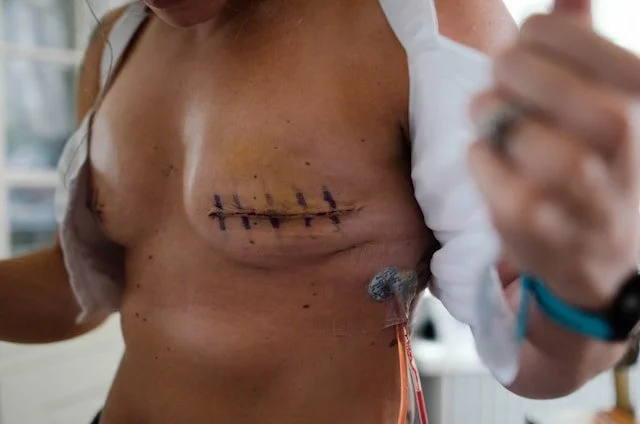Breast Cancer Awareness Month: Only one in three women check their breasts for signs of cancer
Photo by Rebekah Vos on Unsplash
Breast cancer is the most common cancer in the UK. Around 56,000 women are diagnosed with it every year — which is around 150 people a day. As breast cancer is so prevalent, it rightly gets a lot of exposure in traditional and digital media. Breast Cancer Awareness Month is a high-profile campaign which makes news headlines every year, and the pink ribbon is a symbol that’s instantly recognisable as being representative of the disease.
Despite this, a new study has found that only one in three women regularly check themselves for signs of breast cancer. The main reason for women not checking is because they forget to (44%). Then there are those who don’t feel confident checking themselves, and who don’t know how to check or what to look for (11%).
Managing my own self checks
I became acutely aware of the risk of breast cancer, and the importance of self checks when I first encountered the CoppaFeel! charity. This could have easily been a decade or more ago, and I remember seeing the charity’s founders, twin sisters Kris Hallenga and Maren Hallenga, on TV and in the magazines I was reading at the time. Kris was diagnosed with incurable breast cancer at the age of 23, which seemed unfathomable to me as a twenty-something at the time. She sadly passed away in 2024, having lived with breast cancer for 15 years.
It was in no small part to CoppaFeel! that I set a monthly reminder on my phone to check my breasts every month. Years later, the reminder is still active, yet I’d be lying if I said I actually do check my breasts every month. Even with my phone telling me it’s time to self-check, I often don’t. All that so say, I totally understand how so many women forget to do it. Breast Cancer Awareness Month always serves as a reminder that I need to get back on track with checking, and I’m sure it prompts others to do the same.
How to check your breasts
If you’re unsure of the proper technique for self-examinations, this video by Dr Zoe Williams for Bupa Health demonstrates a clear and thorough way to check for any abnormalities. The key takeaways are:
Stand in front of the mirror with your top and bra off
Use the pads of your fingers to check for any lumps
As long as you feel every single area of the breast, it doesn’t matter how you do it
Feel all the way up to the collar bone, and all of the areas in the armpit
What to look out for
NHS guidance states that you should look out for the following when checking your breasts:
A lump or swelling in your breast, chest or armpit
A change in the skin of your breast, such as dimpling (it may look like orange peel) or redness, which may be harder to see on black or brown skin
A change in size or shape of 1 or both breasts, or either side of your chest – it’s common for breasts to be different sizes, but check for any changes that are not normal for you
Nipple discharge (if you're not pregnant or breastfeeding), which may have blood in it
A change in the shape or look of your nipple, such as it turning inwards (inverted nipple) or a rash on it (it may look like eczema)
Sores or ulcers on your chest
This NHS video includes photos that show signs of breast cancer on varying skin tones, which is especially helpful as some breast cancer indicators may look different depending on the shade of your skin.
How effective are self-examinations?
According to Cancer Research UK, women who self-examine their breasts aren’t any less likely to die from breast cancer, and are almost twice as likely to have an unnecessary test (biopsy) on a lump that turns out not to be cancer.
Though the charity doesn’t discourage self-examinations, it doesn’t explicitly encourage them either. Instead it advises women to be breast aware: ‘That means knowing what your breasts or chest usually look and feel like, so you know what’s normal’. It also emphasises the importance of finding breast cancer early, so that you have the best chance of being successfully treated.
Does this feel somewhat wishy washy and contradictory? Yes. It seems reasonable to conclude that self-checks – which include physically and visually assessing any changes to your breasts – are a reliable way of staying ‘breast aware’. Personally, I’d rather play it safe and make a habit of regularly checking, but do with this information what you will!
Don’t take your age for granted
It’s true that age plays a significant factor in your risk of developing breast cancer. You’re most likely to be diagnosed with breast cancer if you’re over the age of 50, around a quarter of all new cases in the UK are diagnosed in people aged 75+, and incidence rates for breast cancer in the UK are highest in people aged 90+.
But this doesn’t mean that younger women should be complacent or take their health any less seriously. Women with experiences similar to Kris’ have shown us that we should all be checking ourselves regularly, and advocating for ourselves if we feel that healthcare professionals aren’t taking our concerns seriously.
